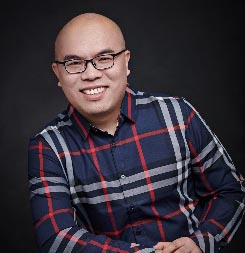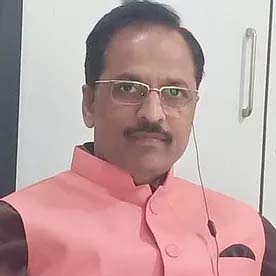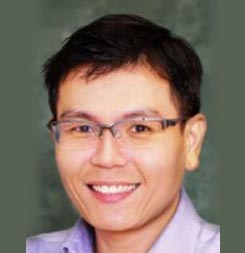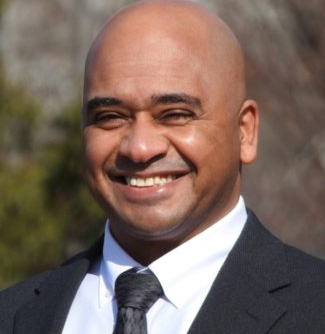Invited Speakers
Dr. Jie Wang
Professor, Innovation Academy for Precision Measurement Science and Technology, Chinese Academy of Sciences, ChinaSpeech Title: In vivo Imaging of Astrocytes in the Whole Brain with Engineered AAVs and Diffusion Weighted Magnetic Resonance Imaging
Abstract: Astrocytes constitute a major part of the central nervous system and the delineation of their activity patterns is conducive to a better understanding of brain network dynamics. This study aimed to develop a magnetic resonance imaging (MRI)-based method in order to monitor the brain-wide or region-specific astrocytes in live animals. Adeno-associated virus (AAVs) vectors carrying the human glial fibrillary acidic protein (GFAP) promoter driving the EGFP-AQP1 (Aquaporin-1, an MRI reporter) fusion gene were employed. The following steps were included: constructing recombinant AAV vectors for astrocyte-specific expression, detecting MRI reporters in cell culture, brain regions or whole brain following cell transduction, stereotactic injection or tail vein injection. The astrocytes were detected by both fluorescent imaging and Diffusion Weighted MRI. The novel AAV mutation (Site-directed mutagenesis of surface-exposed tyrosine (Y) residues on the AAV5 capsid) significantly increased fluorescence intensity (p<0.01) compared with the AAV5 wild type. Transduction of the rAAV2/5 carrying AQP1 induced the titer-dependent changes in MRI contrast in cell cultures (p<0.05) and caudate putamen (CPu) in the brain (p<0.05). Furthermore, the MRI revealed a good brain-wide alignment between AQP1 levels and ADC signals, which increased over time in most of the transduced brain regions. In addition, the rAAV2/PHP.eB serotype efficiently introduced AOP1 expression in the whole brain via tail vein injection. This study provides an MRI-based approach to detect dynamic changes in astrocytes in live animals. The novel in vivo tool could help us to understand the complexity of neuronal and glial networks in different pathophysiological conditions.
Keywords: Astrocytes; Adeno-associated virus (AAV); Aquaporin-1(AQP1); AAV-PHP.eB; Magnetic resonance imaging (MRI); Fluorescence imaging
Dr. R. S. Hegadi
Dean - School of Computer SciencesAssociate Professor and Head - Department of Computer Science, Central University of Karnataka, India
Speech Title: Recent Developments in the Orthopedic Surgical Training Simulators
Abstract: The virtual reality based simulators in the orthopedic surgery are extensively used to assist in the surgical training. Due to the constraints in the physical and advancement in the software and hardware technologies, there is rapid growth in the use of such simulators in the medical field. A sustained development happened in the development of VR-based orthopedic simulators such as laparoscopic surgery, heart surgery and arthroscopic surgery. Research also led to the creation of a drilling simulator with haptic interaction, hip surgical processes and medical surgical training. In this presentation the milestones achieved in the development of VR-based orthopedic simulators in the recent days are discussed and the opportunities in the field of orthopedic simulator development would be presented.
Dr. Liangjing Yang
Assistant Professor, Zhejiang University/ University of Illinois at Urbana-Champaign (ZJU-UIUC) Institute, ChinaSpeech Title: Imaging and Machine Vision for Biomedical Robots
Abstract: The use of imaging technology, combined with computational intelligence, equips modern medical robots with visual perception to performance tasks intelligently. Medical robots assist or work alongside with medical professionals, and sometime patients, in accomplishing diagnostic and therapeutic tasks.
Motivated by the potential in machine vision in image-guided surgeries, we developed a self-contained 3D ultrasound image mapping framework that does not require external tracking system. This development addresses a practical clinical need for an intuitive navigation of the surgical instruments through effective tracking and visualization of the surgical site.
In the application of image-guided robotics, we developed a vision-guided robotic manipulation platform for cell manipulation. The contributions of the work include a self-initializing workflow that minimizes the need for manual intervention and a unified track-servo framework that facilitates uncalibrated micromanipulation. The former enhances the level of autonomy while the latter make the system self-contained and versatile in deployment. Our work in developing an ultrasound image-guided robot designed for collaborative interventional procedures will also be presented in the talk.
Dr. Essam A. Rashed
Professor, Graduate School of Information Science, University of Hyogo, JapanSpeech Title: Development of human head models from anatomical medical images using deep learning
Abstract: Human head models are digital objects that represent the actual anatomy of human head and commonly generated using anatomical medical imaging procedures such as CT and MRI. Head models are essentials in several clinical applications such as neuromodulation, brain mapping and characterization of several neurophysiological disorder. The generation of head model is challenging task as many tissues (non-brain) are commonly out of the focus of imaging modalities and difficult to be identified and segmented. Moreover, accurate segmentation using conventional approaches can take several hours per subject which limit the feasibility of clinical use. In this project, we have developed an efficient yet fast method for the automatic generation of head model in few minutes using new deep learning models. This will help in automation of this complicated clinical procedure and shorten of required time, efforts, and cost. The deep learning model is used to generate a large set of head models that is shared for community use in different applications.
Keywords: anatomical human models, MRI, deep learning
Acknowledgements: This work was funded by the Japan Society for the Promotion of Science (JSPS), a Grant-in-Aid for Scientific Research, Grant number JSPS KAKENHI 22K12765.
List of speakers will be updated soon...





